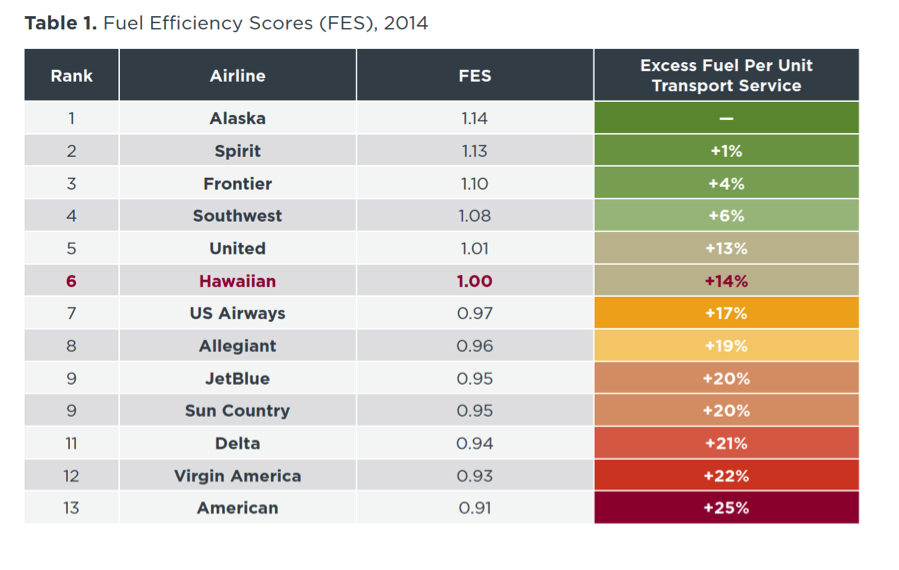Evaluating air carrier fuel efficiency and CO2 emissions in the U.S. airline industry
White paper
U.S. domestic airline fuel efficiency ranking, 2014
This study, the fourth in a series of yearly analyses of U.S. airlines on domestic operations, arrives as we near a potential turning point for public policy concerning aviation and the environment. The International Civil Aviation Organization has committed to deliver an aircraft fuel efficiency standard next year, with a market-based mechanism to cap carbon emissions from the aviation sector to follow. And in the U.S., the Environmental Protection Agency has signaled its intention to regulate aviation GHG emissions under the Clean Air Act.
Commercial aircraft—including passenger aircraft, cargo, and other chartered flights—accounted for 11% of greenhouse gas (GHG) emissions from the U.S. transportation sector in 2013. The Federal Aviation Administration (FAA) estimates that under a business as usual scenario, GHG emissions from U.S. aviation will increase by more than 100% by 2050 compared with 2005 levels, and even faster growth is expected globally.

Highlights
- Alaska, Spirit, Frontier, and Southwest Airlines remained the most fuel-efficient airlines on U.S. domestic operations in 2014. On average, Alaska has operated the most efficient U.S. domestic flights for five years running.
- The fuel efficiency gap between the most- and least-efficient airlines narrowed slightly to 25% in 2014, compared with 27% in 2013.
- On a passenger mile per fuel metric, overall industry fuel efficiency improved by 1.7% from 2013 to 2014. Operational improvements, including a 1% gain in passenger load factor and 1.6% increase in seating density, accounted for most of the gains. Fleet renewal programs and reduced usage of older aircraft also helped lower fuel consumption.
- The past five years have seen a steady increase in the number of seats available per flight, driven by upgrading to larger aircraft and also by simply adding seats to planes. These changes, which allow airlines to move the same number of passengers with fewer flights, translate into increased fuel efficiency, but at the cost of reduced passenger comfort and access (fewer airports served and/or longer wait times between flights).
- A stronger correlation between fuel efficiency and profitability was observed in 2014 compared with 2013, despite a sharp fall in oil prices in the latter half of the year.
Attachments
U.S.-Domestic-Airline-Ranking-2014-Fact-Sheet-final_0.pdf